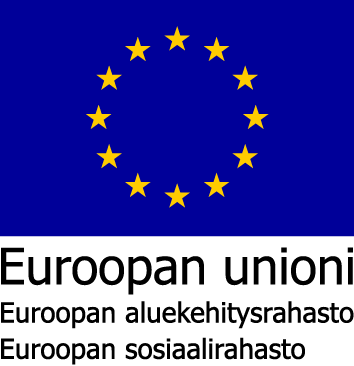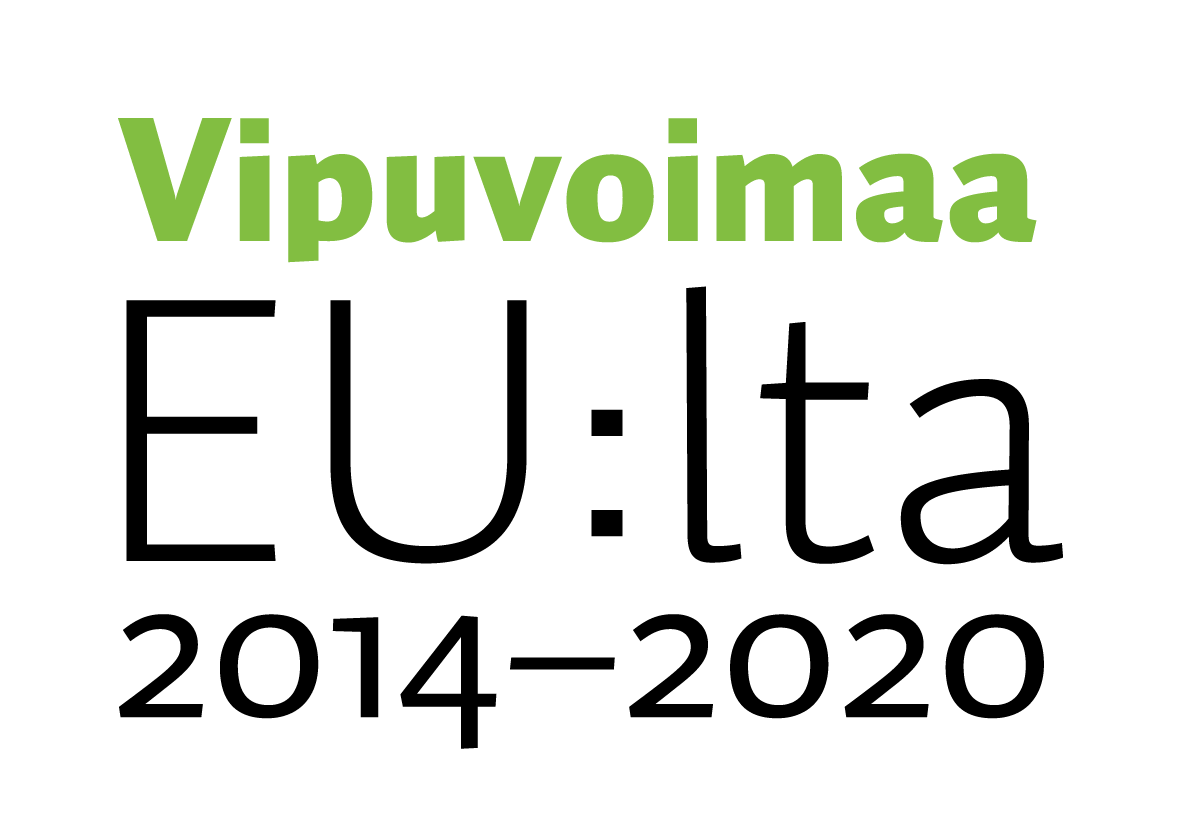

 |
 |
Hankekoodi: A71770
Hankkeen nimi: Metsähakkeen keinokuivauksen vaikutus hankintaketjun kannattavuuteen
Toimintalinja: 2. Uusimman tiedon ja osaamisen tuottaminen ja hyödyntäminen
Erityistavoite: 3.2. Uusiutuvan energian ja energiatehokkaiden ratkaisujen kehittäminen
Suunnitelman mukainen toteutusaika: Alkaa 1.3.2016 ja päättyy 30.6.2019
Toiminnan tila: Toiminta päättynyt
Vastuuviranomainen: Pohjois-Pohjanmaan elinkeino-, liikenne- ja ympäristökeskus
Hakijan virallinen nimi: Luonnonvarakeskus
Organisaatiotyyppi: Valtion viranomainen
Y-tunnus: 0244629-2
Jakeluosoite: Viikinkaari 4
Puhelinnumero: 0295324529
Postinumero: 00790
Postitoimipaikka: Helsinki
WWW-osoite: http://www.luke.fi
Hankkeen yhteyshenkilön nimi: Repola, Jaakko
Yhteyshenkilön asema hakijaorganisaatiossa: tutkija
Yhteyshenkilön sähköpostisoite: jaakko.repola(at)luke.fi
Yhteyshenkilön puhelinnumero: 0295325150
Hakijoiden lukumäärä tai tuen siirto -menettely:
Projektin päätavoitteena on parantaa metsäenergian tuotannon kannattavuutta testaamalla biopolttoaineiden
kaivaukseen kehitettyä konttikuivuria (liiketoimintaan ja tekniikkaan liittyvä innovaatio) metsähakkeen tuotannossa
pilot–mittakaavassa Lapissa. Projektissa pilotoidaan konttikuivurin soveltuvuutta metsähakkeen kuivaukseen
toimitusketjun (arvoketjun) eri vaiheissa (terminaali tai käyttöpaikka), mikä mahdollistaa arvoketjujen
kannattavuusvertailun sekä keskenään että ennen kaikkea olemassa olevien arvoketjujen kanssa. Tarkasteltavana
oleva toimintamalli (toimitusketjukokonaisuus) tukee pilottiyritysten omaa liiketoimintaa. Lisäksi toimintamalli on
sovellettavissa erityisesti hajautettujen energiatuotannon järjestelmissä parantaen paikallisten metsäenergiatoimijoiden
liiketoimintamahdollisuuksia. Tavoitteena on alueen kilpailukyvyn nostaminen siten, että jo ensimmäisen vaiheen
toimijoilla (pienyrittäjät, metsänomistajat) on edellytykset parantaa toimintansa kannattavuutta. Erityistavoitteena on
selvittää uuden toimintamallin hyödyntämistä Suomen kasvavaan energiatarpeeseen. Hajautettujen järjestelmien
pilotointi toimintaympäristössä lisää tietämystä toimijakohtaisista (esim. metsänomistaja, pienyrittäjä, lämpölaitos)
kannattavuuksista. Mallia voidaan pilotoinnin jälkeen mahdollisesti soveltaa laaja-alaisesti esimerkiksi Pohjoismaissa
sekä jopa koko Euroopan alueella. Koska bioenergian tuotantotarve kasvaa jatkuvasti, on perusteltua selvittää miten
uusilla innovaatioilla voidaan tehostaa puuperäisten polttoaineiden toimitusketjuja siten, että kaikille toimijoille voidaan
taata taloudellisia kannustimia osallistua toimintaan. Uudet innovaatiot ovat avainasemassa, jotta onnistutaan
hyödyntämään tehokkaammin mm. Pohjois-Suomen mittavia metsävaroja energiatuotannossa, erityisesti hajautettujen
järjestelmien toimintaympäristössä.
LUKE (Luonnonvarakeskus) on kotimaisten PK–yritysten (SFTec Oy, Mikkone Oy) ja Lapin ammattikorkeakoulun
kanssa laatinut projektin, joka liittyy keskeisesti teemoihin ”tutkimus ja innovaatiot” ja ”Yrittäjyys”. Projektin
toteutusalueen (Lappi) runsaat metsävarat ovat vajaakäytössä, mikä mahdollistaa energiatuotannontoimitusketjujen
kehittämisen ja innovoinnin siten, että osa ideoista saadaan taloudellisesti kannattaviksi kokonaisuuksiksi.Projektissa
mukana olevat yritykset (laitevalmistaja, metsäenergiayrittäjä) toimivat aktiivisina teknologian ja liiketoimintamallien
kehittäjinä. Pilotointien toteutuksessa yritykset, ovat tiiviisti mukana.
Hankkeen varsinaiset kohderyhmät ovat metsähakkeen tuotantoon ja käyttöön osallistuvat toimijat sekä myös teknologiatoimittajat (konttikuivuri), jotka voivat hyödyntää hankkeen tuloksia omassa tuotekehittelyssä. Metsähaketuotantoketjun eri vaiheisiin osallistuvat toimijat kannolta lämpölaitokselle ovat metsänomistajat, pk-yritykset (hakkuu-, haketus- ja kaukokuljetusyritykset) sekä lämpöyrittäjät.
Hankkeessa tehtävään pilottiin osallistuvat pk-yritykset saavat osallistua uudenlaiseen hakkeen kuivatusmenetelmän testaukseen toiminnassaan. Kannattavuuslaskennan ja hajautetun mallin hyötyjen todentamisen kautta tästä hankkeesta voi hyötyä koko metsäenergian toimitusketju. Hankkeen kohderyhmät (välilliset ja välittömät) hyötyvät saamalla uutta tietoa ja osaamista. Hankkeen tutkimus- ja kehittämistoiminta tehdään yhteistyössä toimijoiden kanssa, jossa on vakuuttava tutkimustoimijoiden, asiakashyötyjien ja teknologitoimittajien osaaminen. Näin voidaan testata jo aikaisemmin tieteellisessä kirjallisuudessa esitettyjä hypoteeseja ja kehittyä tuottamaan entistä arvokkaampia ja laadukkaampia ratkaisuja bioenergian tuotantoketjuun.
Välilliset kohderyhmät ovat kaikki metsäenergialla toimintaan osallistuvat tahot.
Pienpolttolaitokset
Logistiikkaketjuun osallistuvat toimijat
Laitteiden rakentamiseen merkittäviä alihankintaverkostoja
Bioenergia alalla toimivat pk-yritykset
Energiayhtiöt
Kyläyhteisöt
Myönnetty EU- ja valtion rahoitus: 273 612
Toteutunut EU- ja valtion rahoitus: 269 010
Suunniteltu julkinen rahoitus yhteensä: 362 094
Toteutunut julkinen rahoitus yhteensä: 318 773
Maakunnat: Lappi
Seutukunnat: Tunturi-Lapin, Rovaniemen, Kemi-Tornion, Torniolaakson
Kunnat: Ylitornio, Rovaniemi, Keminmaa, Kittilä
Jakeluosoite:
Postinumero:
Postitoimipaikka:
Suunniteltu: 0, joihin työllistyvät naiset 0
Toteutunut seurantatietojen mukaan: 0.00, joihin työllistyvät naiset 0.00
Suunniteltu: 0, joista naisten perustamia 0
Toteutunut seurantatietojen mukaan: 0.00, joista naisten perustamia 0.00
| Välitön | Välillinen | |
| Ekologinen kestävyys | ||
| Luonnonvarojen käytön kestävyys | 0 | 5 |
| Kestävän puuvarojen käytön kannalta on tärkeää, että metsiä hoidetaan. Taimikoiden hoitohakkuista voidaan saada energiaksi kelpaavaa haketta. Haketuotantoa nuorista metsistä rajoittavana tekijänä ovat korkeat korjuukustannukset suhteessa lopputuotteen arvoon. Tässä hankkeessa pyritään kannattavuuden parantamiseen hajautettuja mallia hyödyntäen | ||
| Ilmastonmuutoksen aiheuttamien riskien vähentäminen | 0 | 0 |
| Kasvillisuus, eliöt ja luonnon monimuotoisuus | 0 | 0 |
| Pinta- ja pohjavedet, maaperä sekä ilma (ja kasvihuonekaasujen väheneminen) | 0 | 0 |
| Natura 2000 -ohjelman kohteet | 0 | 0 |
| Taloudellinen kestävyys | ||
| Materiaalit ja jätteet | 10 | 5 |
| Hankkeessa tutkitaan juurikin metsäenergiaksi tarkoitetun hakkeen laadun parantamista, ja siten tehokkaampaa hyödyntämistä. Tulosten avulla voidaan arvioida, onko mahdollista metsähakkeen kuivaamisella nopeuttaa hakkeen toimitusketjua (hävikki pienenee) ja parantaa metsähakkeen laatua (alhaisempi kosteus) ts. parantaa hakkeen materiaalitehokkuutta siten, että toimitusketjun kustannustehokkuus (erityisesti kaukokuljetus ja hakkeen poltto) paranee kasvattaen koko ketjun jalostusarvoa. Lisäksi metsähakkeen konttikuivaaminen mahdollistanee talvileimikoiden hyödyntämisen, mikä puolestaan parantaa metsähakkeen ympärivuotista toimitusvarmuutta ja pienentää samalla talteenoton ns. kausipiikkien kustannuksia kasvattavaa vaikutusta. | ||
| Uusiutuvien energialähteiden käyttö | 10 | 10 |
| Hankkeen päätavoitteena on parantaa uuden innovaation ja toimintamallin avulla bioenergian (metsäenergia) tuotantoketjun kannattavuutta erityisesti hajautetun energiatuotannon ratkaisuissa. Tavoitteena on selvittää kuinka uusi toimintamalli parantaa metsähakkeen toimitusketjun kannattavuutta ja lopputuotteen jalostusarvoa. Tavoitteena on myös selvittä kuinka arvoketju muodostetaan niin, että kaikilla toimijoilla (metsänomistaja, hakkuu, haketus, kaukokuljetus, lämpölaitos) on entistä paremmat edellytykset harjoittaa liiketoimintaa. | ||
| Paikallisen elinkeinorakenteen kestävä kehittäminen | 5 | 5 |
| Pohjois-Suomen maaseudun elinvoimaisuuden ylläpitämiseksi on perusteltua kehittää metsähakkeen tuotantoon innovaatioita, jotka pohjautuvat hajautettuihin järjestelmiin. Merkittävää kasvua on odotettavissa uusien innovaatioiden myötä. Raaka-ainevarantojen, metsien vuosittainen kasvu on hyödynnettävä tehokkaasti, ja metsäenergian aseman vahvistuttua saadaan lisää alueelle työpaikkoja. | ||
| Aineettomien tuotteiden ja palvelujen kehittäminen | 0 | 0 |
| Liikkuminen ja logistiikka | 10 | 5 |
| Nykytilanteessa metsäenergian hakekuljetuksissa kuljetetaan noin 40% vesipitoisuudeltaan olevaa haketta. Tavoitteena on saada tuo hakkeen vesipitoisuutta alemmas, jotta kuljetetaan laadultaan ja energiatiheydeltään parempaa haketta, jotta saataisiin arvoketjua kannattavammaksi. | ||
| Sosiaalinen ja kulttuurinen kestävyys sekä yhdenvertaisuus | ||
| Hyvinvoinnin edistäminen | 0 | 0 |
| Tasa-arvon edistäminen | 0 | 0 |
| Yhteiskunnallinen ja kulttuurinen yhdenvertaisuus | 0 | 0 |
| Kulttuuriympäristö | 0 | 0 |
| Ympäristöosaaminen | 7 | 5 |
| Hankkeen aikana hakkeen kuivatusmenetelmien testaus hakkuupaikalla lisää tietoa toimijoille miten voidaan parantaa hakkeen laatua, joka hyödyttää koko arvoketjua ja toimialaa. Hankkeessa tehtävään pilottiin osallistuvat pk-yritykset saavat osallistua uuden innovaation testaukseen toiminnassaan. Kannattavuuslaskennan ja hajautetun mallin hyötyjen todentamisen kautta tästä hankkeesta voi hyötyä koko metsäenergian toimitusketju aina polttolaitoksiin saakka. Hankkeen asiakkaat (välilliset ja välittömät) hyötyvät saamalla uutta tietoa ja osaamista. | ||
Projektissa selvitettiin, voidaanko metsähakkeen keinokuivauksella parantaa hakkeen toimitusketjun kannattavuutta. Tätä varten testattiin bioraaka-aineiden kuivaukseen kehitettyä siirrettävää kontti-kuivuria (SFTec Oy) metsähakkeen (energiaranka) kuivaukseen. Koekuivaukset toteutettiin Rovaniemellä 2017 – 2018. Kuivauslämpö tuotettiin lämpölaitoksen reservilämmöllä (v. 2018) ja erillisellä hakekontilla (v. 2017). Lisäksi polttokokeissa (lämpölaitos, laboratorio) selvitettiin keinokuivatun hakkeen hyödyt lämmöntuotannossa sekä uuteaineiden säilyvyys kuivauksen aikana.
Hakkeen kosteus putosi koekuivauksissa (2018) keskimäärin 15.6 prosenttiyksikköä vaihdellen 12 – 21 prosenttiyksikön välillä riippuen kuivausajasta (1:33 - 1:49 tuntia) ja tuntituottavuudesta (2,5 – 3,6 i-m3/h). Kuivauksessa hakkeesta poistettiin vettä keskimäärin 44 kg/i-m3 (33 – 56 kg/i-m3), jolloin hakkeen energiasisällön muutos oli keskimäärin 0,030 MWh/i-m3 (0,024 – 0,037 MWh/i-m3). Lämpötila kuivurissa oli noin 30 astetta. Uuteaineiden pitoisuudet putosivat kuivauksessa, vesiliukoiset 13 % ja rasvaliukoiset 19 %.
Laboratoriossa tehtyjen polttokokeiden savukaasu- ja hiukkasanalyysien perusteella keinokuivaus vähensi typen oksidien määrää ja erityisesti savukaasujen häkäpitoisuutta sekä kokonaishiukkaspäästöjä. Myös palamisen hyötysuhde oli parempi keinokuivatulla hakkeella (kosteus 20 %) verrattuna hakkeeseen, jonka kosteus vastasi luonnonkuivatun hakkeen kosteustasoa (35 %). Sen sijaan lämpölaitoksen koepoltossa keinokuivattu hake-erä ei poikennut vastaavana ajankohtana laitokselle toimitettujen hake-erien energiatuotosta (0,6 – 0,7 MW/i-m3), johon vaikutti mm. testierän pieni koko.
Keinokuivauksella voidaan kasvattaa metsäenergiapotentiaalia, merkittävästikin jos kohdealue on riittävän iso (esimerkkinä Rovaniemen alue, kokonaisenergiasisältö 317 232 – 359 874 MWh vuodessa). Yksittäisen lämpöyrittäjän näkökulmasta, keinokuivaukseen käytettävä energia pitäisi saada reilusti alle markkinahinnan, jotta rankahakkeen keinokuivaus olisi liiketaloudellisesti perusteltua. Perinteinen (luonnonkuivaus) ja keinokuivauksen sisältämä toimitusketjut olivat yhtä kannattavia, kun kuivurin tehotuntituottavuus oli noin 5 i-m3/h. Tätä suuremmilla arvoilla keinokuivaukseen perustuva toimitusketju oli kannattavampaa. Keinokuivauksen kannattavuus parani merkittävästi, mikäli keinokuivatusta hakkeesta maksetaan yhden euron lisähinta per MWh verrattuna ulkoilmassa kuivattuun metsähakkeeseen.